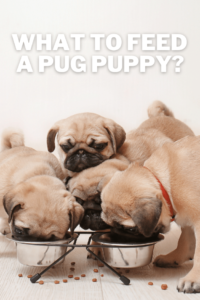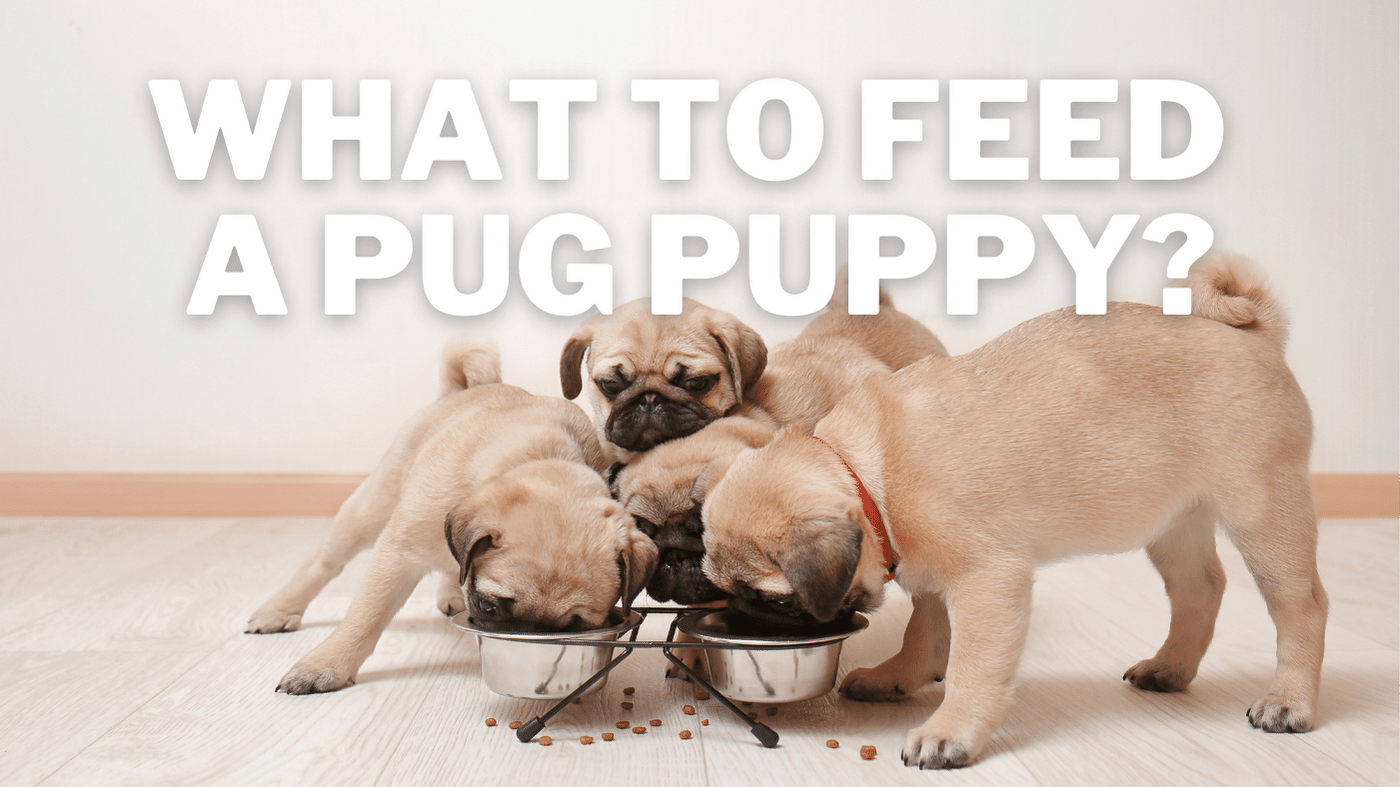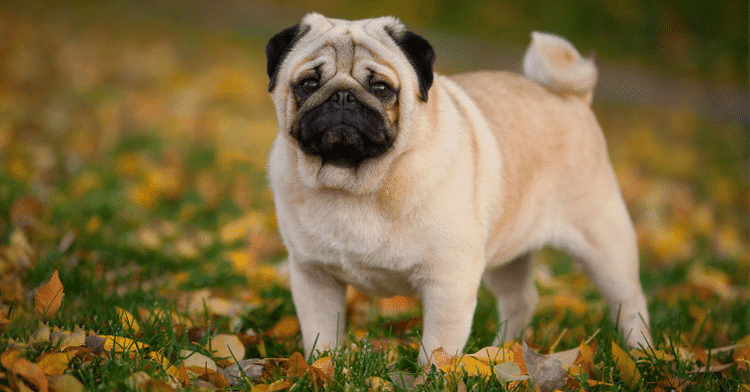What to Feed a Pug Puppy: The Ultimate Feeding Guide
Welcome, we’re about to go on a delightful journey into the world of nourishing your beloved pug puppy, and what to feed a pug puppy. This feeding guide is more than just words on a screen; it’s a loving handshake from one dog enthusiast to another.
We’re dedicated to providing you with comprehensive, unbiased information that will help your pug puppy thrive. Here, we understand the boundless affection you have for your furry companion, especially if they have those charming flat faces we adore so much, like the one and only Bruce Lee.
Understanding the Importance of Proper Nutrition for Pug Puppies
Now, let’s dive into why proper nutrition is paramount for your pug puppy. Your little squish-faced bundle of joy relies on you to provide not only love but also a well-balanced diet that nurtures their growth, development, and overall health. Here’s why it matters:
- Small Breed, Big Needs: Pugs belong to the category of small dog breeds, known for their distinctive appearance and charming personalities. But these compact canines have unique dietary requirements that must be met to ensure their well-being.
- The Role of Nutrition in Their Growth and Development: Pug puppies are like tiny sponges, soaking up nutrients to fuel their rapid growth. Ensuring they receive the right nutrients during this crucial phase is vital for their long-term health.
So, whether you’re a first-time pug owner or a seasoned pug parent, this guide is your go-to resource for navigating the world of pug puppy nutrition. We’ll cover everything from choosing the right food for your pug to addressing specific health concerns. With our guidance, you’ll be equipped to provide your pug puppy with a diet that not only supports their growth but also ensures their happiness and vitality.
Stay with us as we uncover the secrets to raising a healthy, happy, and well-fed pug puppy. The adventure is about to begin, and we’re excited to have you along for the journey!

The Dietary Needs and What to Feed a Pug Puppy
The Unique Requirements of Pug Puppies
Small Breed, Big Needs: Why Pugs are Special
- Size Matters: Pug puppies may be pint-sized, but their dietary needs are far from small. Their petite frames are precisely why they require special attention when it comes to nutrition. Their tiny bodies are more susceptible to dietary imbalances, making it crucial to provide them with high-quality, carefully chosen food.
- Flat-Faced and Fabulous: Pugs are beloved for their unique appearance, but their endearing flat faces come with a set of challenges. Their brachycephalic (flat-faced) structure can affect their ability to eat comfortably, and they may need specially designed-food to accommodate this.
The Role of Nutrition in Their Growth and Development
- Building the Foundation: Pug puppies are in the prime of their growth and development. The nutrients they consume now will shape their future health. Proper nutrition supports the development of strong bones, a healthy coat, and robust organ function.
- Immune System Boost: Pug puppies need essential nutrients to strengthen their immune system. This is especially vital for pugs due to their susceptibility to certain health issues. Proper nutrition can help ward off potential problems.
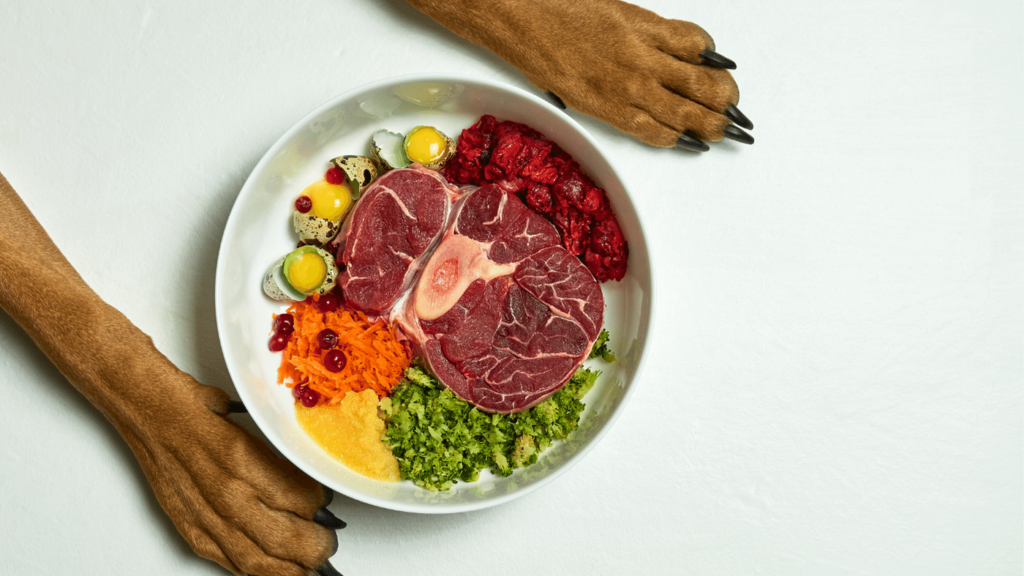
The Fundamentals of a Pug Puppy’s Diet
The Role of Mother’s Milk
- The Perfect Start: Mother’s milk is nature’s gift to newborn pug puppies. It’s a powerhouse of essential nutrients and antibodies that boost their immunity and provide a solid foundation for growth. If possible, allowing your pug puppy to nurse for the first few weeks is ideal.
- When Mother’s Milk is Not an Option: Sometimes, circumstances may prevent your pug from nursing with their mother. In such cases, it’s crucial to consult your veterinarian or breeder to find suitable milk replacements that can provide essential nourishment.
Transitioning to Solid Food
- The Weaning Process: At around three to four weeks of age, pug puppies typically start transitioning to solid food. This process should be gradual to ensure they adjust well. A soft, moist puppy food or a homemade porridge can help make this transition smoother.
- Introducing Variety: As your pug puppy grows, introduce a variety of food textures to promote dental health and satisfy their curiosity. Mixing dry kibble with wet food can be a delightful way to add variety to their diet.
Age Milestones: What to Feed at Different Stages
- The Early Months: In their first few months, pug puppies require high-energy foods to support their rapid growth. Look for foods formulated specifically for puppies. These should contain all the essential nutrients required for optimal growth and development.
- The Teenage Phase: As your pug puppy becomes an adolescent, you’ll need to make adjustments to their diet. They’ll require fewer calories than when they were growing rapidly. It’s important to start the transition to adult dog food, but not too soon.
- Adulthood and Beyond: Eventually, your pug puppy will become a full-fledged adult. At this stage, their dietary needs will stabilize, and you’ll need to choose the best adult dog food to maintain their health and vitality.
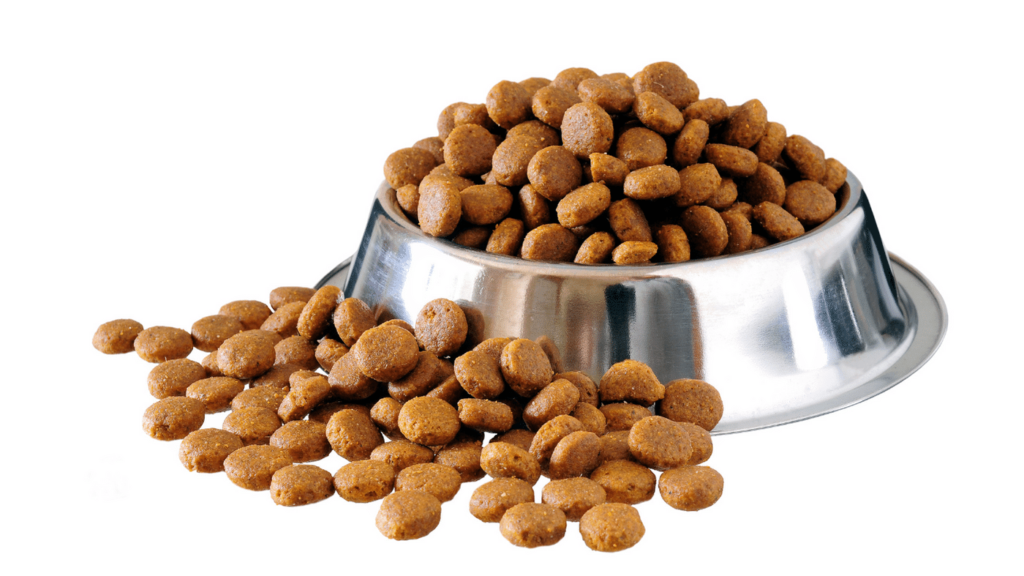
Commercial Puppy Food: What to Feed a Pug Puppy
Deciphering Dog Food Labels
Key Ingredients to Look For
- Protein: The first ingredient you should seek in your pug puppy’s food is a high-quality source of protein, like chicken, beef, or salmon. Protein is essential for muscle development and overall health.
- Whole Grains: Look for whole grains like brown rice and oats. They provide necessary carbohydrates for energy and fiber for digestion.
- Fruits and Vegetables: A good commercial puppy food will include fruits and vegetables like sweet potatoes, carrots, and peas. These ingredients offer essential vitamins and minerals.
- Avoid Fillers: Steer clear of dog food with fillers like corn gluten meal and excessive amounts of low-quality grains. These provide little nutritional value and can lead to digestive issues.
The First Ingredient Matters
- Quality over Quantity: The first ingredient listed on the label is the primary component of the food. Ensure it’s a high-quality protein source, not a byproduct or filler. This sets the tone for the entire meal.
- Meat vs. Meat Meal: Look for labels that specify “chicken” or “beef” rather than “meat meal.” Whole meats provide more nutrition and less processing.
Wet Food vs. Dry Food
The Benefits of Wet Food
- Hydration: Wet food contains more moisture, which helps keep your pug puppy hydrated, especially if they’re not drinking enough water.
- Palatability: Pugs can be picky eaters, and wet food often appeals to their taste buds due to its texture and aroma.
- Senior Pugs: Wet food can be a great option for senior pugs who may have dental issues, as it’s easier to chew.
Dry Dog Food: A Balanced Choice
- Dental Health: Dry kibble can help maintain your pug’s dental health by reducing plaque buildup through chewing.
- Convenience: It’s easy to store, doesn’t require refrigeration, and can be left out for your pug to graze on during the day.
- Balanced Nutrition: Many high-quality dry dog foods are formulated to provide a balanced diet for pug puppies, with the right blend of proteins, fats, and carbohydrates.
High-Quality Proteins and Fatty Acids
Protein Sources
- Chicken, Turkey, or Salmon: These lean protein sources are excellent for pug puppies as they promote muscle development without excessive fat.
- Avoid Allergens: Be mindful of potential allergens. If your pug shows signs of food allergies, consult your vet and consider alternative protein sources.
The Importance of Fatty Acids
- Omega-3 and Omega-6 Fatty Acids: Look for foods rich in these essential fatty acids. They promote healthy skin and a lustrous coat while supporting brain and eye development.
- Fish Oil Help: Adding a fish oil supplement to your pug puppy’s diet can provide an extra boost of these crucial fatty acids.
Avoiding Common Allergens
Food Allergies in Pugs
- Common Allergens: Pugs, like many other breeds, can be prone to food allergies. Keep an eye out for common allergens such as wheat, soy, and artificial additives in the ingredient list.
- Symptoms: Allergies may manifest as itching, skin problems, digestive issues, or ear infections. If you suspect food allergies, consult your vet for guidance.
Navigating the “Human Food” Dilemma
- Treats in Moderation: It’s tempting to share human food with your pug, but be cautious. Some human foods can be toxic to dogs. Stick to safe treats like small pieces of lean meat or vegetables.
- Homemade Treats: If you want to treat your pug to homemade snacks, consider recipes that are pug-friendly and free from ingredients that could harm them.
Choosing the right commercial food for your pug puppy is a pivotal step in ensuring their health and happiness. It’s essential to understand the pros and cons of different types of food and become a savvy label reader to make informed decisions. Remember, the best food is the one that suits your pug’s individual needs and preferences.
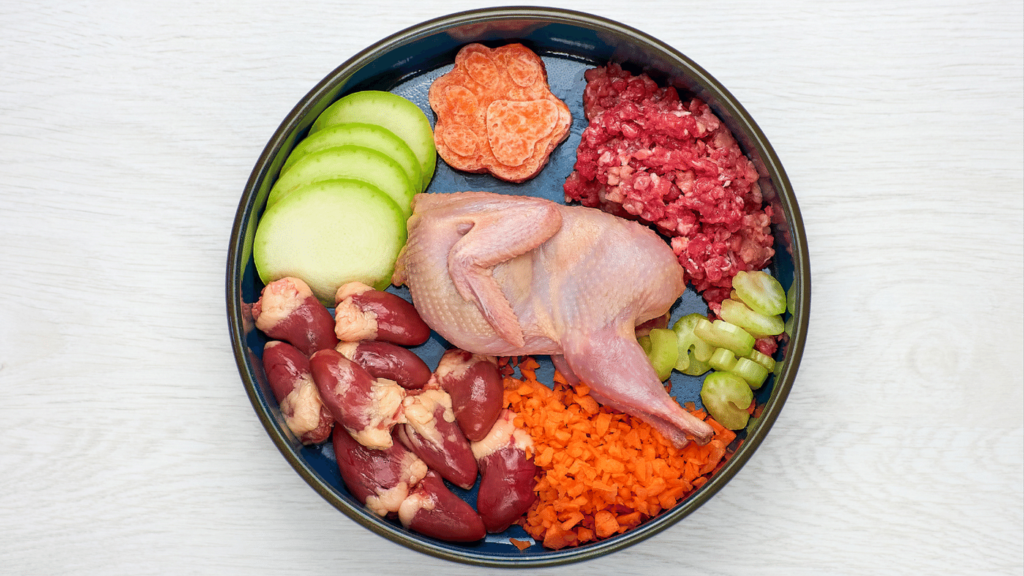
Homemade Diets for Pug Puppies
Pros and Cons of Homemade Diets
Tailoring Nutrition to Your Pug
- Personalization: One of the primary advantages of homemade diets is the ability to tailor your pug puppy’s nutrition to their specific needs. If your pug has allergies or sensitivities, you can eliminate problematic ingredients and ensure they get exactly what they require.
- Control Over Ingredients: You have complete control over the ingredients you use. This can be especially important if you prefer to use organic or locally sourced ingredients.
Addressing the Challenges of Home-Cooked Meals
- Balancing Act: Creating a balanced diet for your pug puppy can be challenging. You’ll need to ensure they receive the right blend of proteins, fats, and carbohydrates. Seeking guidance from a veterinary nutritionist is highly recommended.
- Time and Effort: Homemade diets can be time-consuming, and you’ll need to be diligent in preparing, storing, and serving the food to avoid contamination or spoilage.
Crafting a Balanced Diet
The Role of Protein and Amino Acids
- High-Quality Proteins: When crafting homemade meals, opt for high-quality protein sources such as lean meats (e.g., chicken or turkey). These provide the necessary amino acids for muscle development and overall health.
- Variety is Key: To ensure a well-rounded diet, incorporate different protein sources over time. This diversity helps your pug puppy receive a broader spectrum of nutrients.
Essential Nutrients for Pug Puppies
- Calcium and Phosphorus: Growing pug puppies need the right balance of calcium and phosphorus for strong bones. Be cautious not to overdo it, as an excess of these minerals can lead to developmental issues.
- Fatty Acids: Include sources of omega-3 and omega-6 fatty acids in their diet. These promote healthy skin and coat, crucial for your pug’s good looks and comfort.
Recipe Ideas for Homemade Pug Puppy Food
Sweet Potato and Chicken
- Ingredients: Skinless chicken breasts, sweet potatoes, peas, and a teaspoon of fish oil.
- Preparation: Boil the chicken, sweet potatoes, and peas until they’re tender. Dice the chicken into small pieces and mash the sweet potatoes. Mix all the ingredients and add fish oil for an extra nutritional boost.
- Benefits: This recipe is rich in lean protein and complex carbohydrates, making it a well-balanced meal for your pug puppy.
Brown Rice and Fish Oil
- Ingredients: Brown rice, canned salmon, green beans, and a teaspoon of fish oil.
- Preparation: Cook the brown rice according to the package instructions. Combine cooked rice, canned salmon, and cooked green beans. Add fish oil for a dose of omega-3 fatty acids.
- Benefits: This recipe offers a blend of carbohydrates, high-quality protein, and healthy fats. The salmon provides omega-3 fatty acids for skin and coat health.
When considering a homemade diet for your pug puppy, it’s essential to weigh the pros and cons carefully. While it offers personalization and control, it also requires commitment and careful consideration to provide a balanced diet.
Consult your veterinarian for guidance on crafting homemade meals that suit your pug’s unique needs. Homemade diets can be a loving and nutritious choice, but they should be approached with care to ensure your pug puppy receives all the nutrients they require.
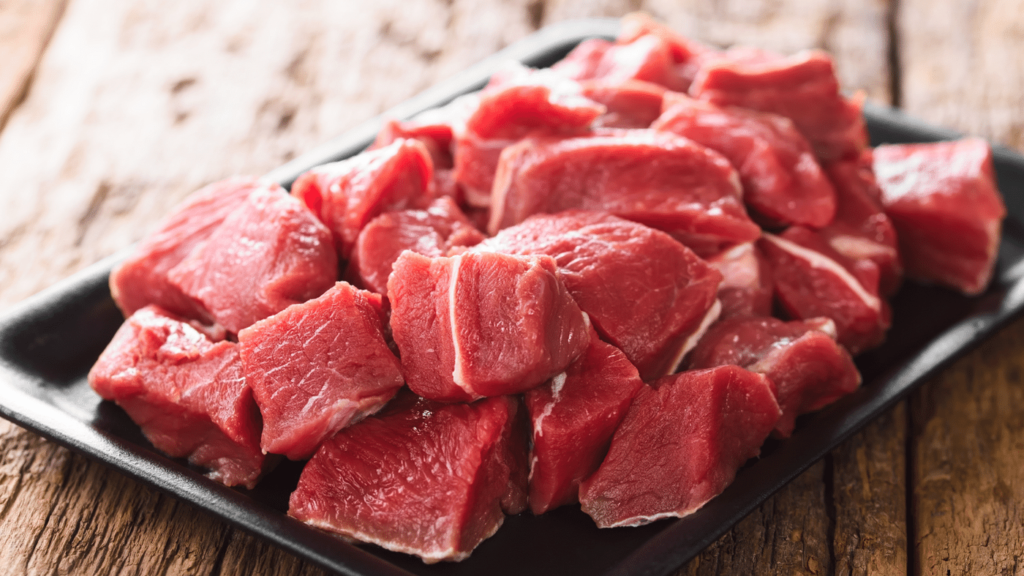
Raw Food Diet: Is It a Good Idea for Pug Puppies?
The Debate Over Raw Feeding
Advantages and Disadvantages
- Advantages of a Raw Diet:
- Nutritional Purity: Raw diets often consist of unprocessed, whole ingredients, which can provide optimal nutrient bioavailability for your pug puppy.
- Improved Dental Health: Chewing on raw bones and tougher textures can help maintain dental health by reducing plaque and tartar buildup.
- Potential Allergen Solution: For pug puppies with food allergies, a raw diet can eliminate common allergens found in commercial foods.
- Disadvantages of a Raw Diet:
- Nutritional Imbalance: Balancing a raw diet can be challenging. Without careful attention to variety and supplements, your pug puppy may miss out on essential nutrients.
- Food Safety: Handling raw meat comes with the risk of bacterial contamination. Proper storage, preparation, and hygiene are critical.
- Cost and Convenience: Raw feeding can be more expensive and time-consuming than commercial food. Sourcing quality ingredients can also be challenging.
Specific Nutrients in a Raw Diet
- Protein: Raw diets are typically rich in protein, which is essential for your pug puppy’s muscle development and overall health.
- Fatty Acids: To maintain healthy skin and a lustrous coat, raw diets often provide essential fatty acids like omega-3 and omega-6.
- Digestive Health: Some proponents claim that raw diets improve digestion due to the absence of fillers and artificial additives.
The Right Amount and Balance
Controlling Portion Sizes
- Age and Activity Level: The amount your pug puppy needs depends on their age and activity level. Puppies need more calories for growth, while adult pugs may require fewer calories.
- Consult Your Veterinarian: Work with your veterinarian to determine the right portion sizes for your specific pug puppy. They can provide guidance based on your pug’s unique needs.
A Word on Raw Bones
- Benefits of Chewing: Chewing on raw bones can promote dental health by helping to remove plaque and tartar from your pug’s teeth. It can also provide mental stimulation.
- Safety Precautions: While raw bones can be beneficial, they should be chosen carefully. Small, soft bones that may splinter should be avoided. Always supervise your pug while they’re chewing on bones to prevent choking hazards.
The debate over raw feeding for pug puppies continues among dog owners and experts. While raw diets offer potential benefits, they come with challenges, including the need for careful nutrient balance and food safety.
If you’re considering a raw diet for your pug puppy, it’s crucial to do thorough research and consult your veterinarian to ensure you provide a safe and nutritionally balanced diet.
Raw feeding can be a rewarding choice for some pug owners, but it’s not without its complexities and potential risks.
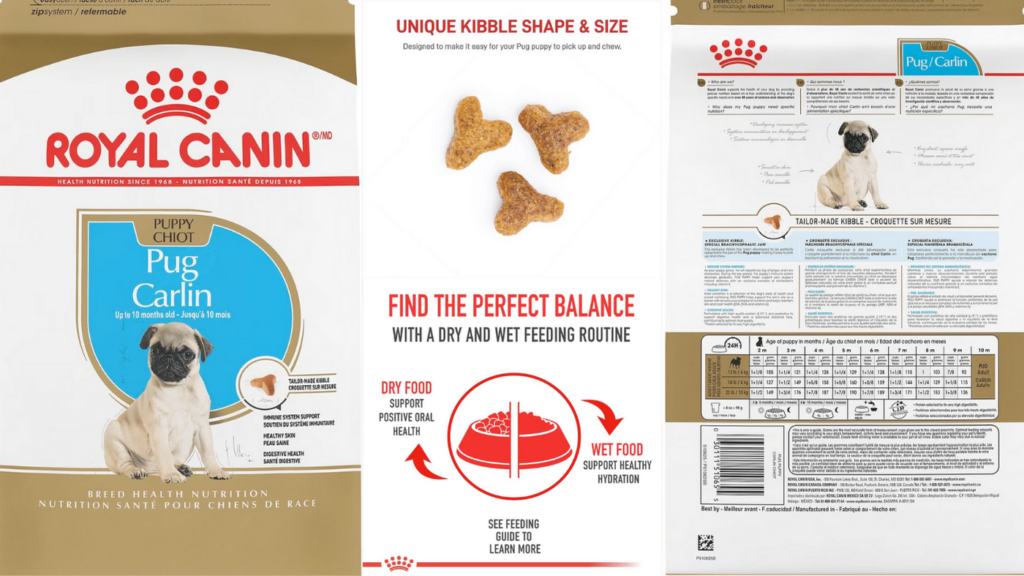
Breed-Specific Diets for Pugs
Understanding the Needs of the Pug Breed
- Brachycephalic Considerations: Pugs belong to the brachycephalic group of breeds, which are known for their flat faces. Their unique facial structure can impact their eating habits and digestion. Understanding these breed-specific characteristics is crucial when selecting their food.
- Weight Management: Pugs have a tendency to gain weight easily, which can exacerbate their breathing problems. Their diet should support weight management without sacrificing essential nutrients.
- Allergies and Skin Sensitivities: Pugs are prone to skin allergies and sensitivities. Their diet should avoid common allergens and include ingredients that promote healthy skin and coat.
Exclusive Mix of Antioxidants: The Royal Canin Pug Food
- Tailored Antioxidants: Royal Canin offers a pug-specific diet formulated with antioxidants like vitamin E and other nutrients designed to support your pug’s unique health needs.
- Respiratory Health: Pugs can have respiratory issues due to their facial structure. This breed-specific food aims to support their respiratory health and overall well-being.
- Nutrient Balance: Royal Canin’s pug food is crafted to provide a precise balance of nutrients to keep your pug at a healthy weight, promoting their ideal body condition.
Purchase Royal Canin Pug on Amazon Here
As an Amazon Associate, we earn from qualifying purchases at no additional charge to you.
Tailor-Made Nutrition for Pugs
- Avoiding Overfeeding: Pugs are known for their enthusiasm when it comes to mealtime. Breed-specific diets take this into account, offering calorie control to prevent overfeeding and excessive weight gain.
- Joint Health: Many pugs develop joint issues as they age. Breed-specific diets may include ingredients like glucosamine and chondroitin to support joint health.
- Digestive Sensitivity: Pugs can have sensitive stomachs. Tailor-made diets often contain easily digestible ingredients to minimize gastrointestinal issues.
Finding the Best Commercial Food for Pug Puppies
- Research and Consultation: When choosing commercial food for your pug puppy, it’s essential to do your research and seek advice from your veterinarian. They can recommend commercial options that align with your pug’s age, health, and dietary needs.
- Quality Over Quantity: Look for commercial foods with high-quality ingredients. Focus on foods that list whole proteins as their first ingredient and avoid those with excessive fillers.
- Trial and Observation: Pug puppies may have specific food preferences and sensitivities. Consider trying a few different high-quality commercial foods and observe how your pug responds to them. This will help you determine the best fit for their taste and digestion.
Selecting the best commercial food for your pug puppy requires a keen understanding of the breed’s unique needs. Pugs have specific considerations related to their facial structure, weight management, and potential sensitivities.
Breed-specific diets and high-quality commercial foods can help address these concerns and provide balanced nutrition. Always consult with your veterinarian to ensure you’re making the most appropriate choice for your pug puppy’s well-being.
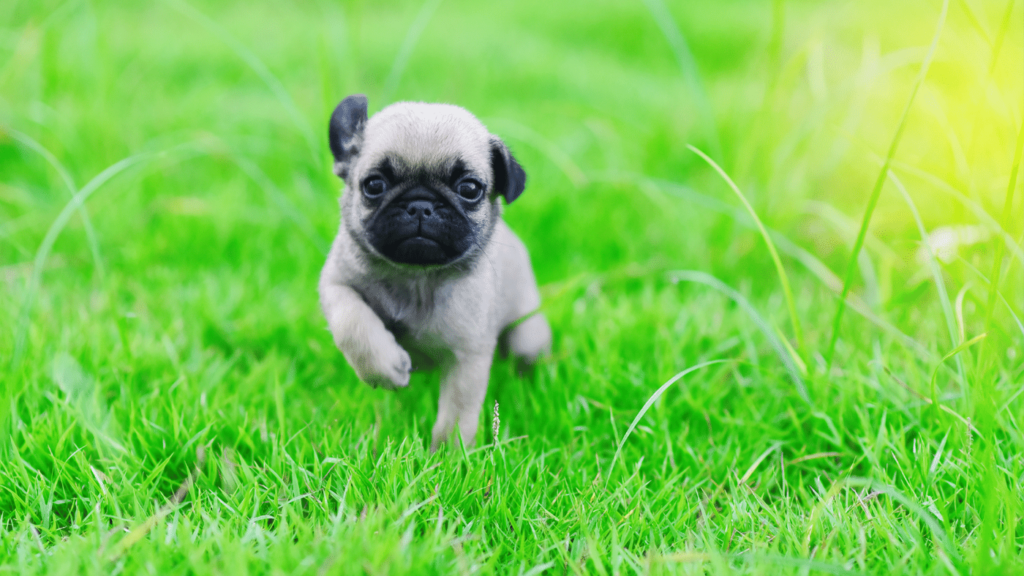
Pug Puppy Feeding Chart
How Much Food Does Your Pug Puppy Need?
Age and Activity Level Considerations
- Puppy Growth Phase: Pug puppies experience rapid growth during their first year. For the first few months, they require more calories and nutrients to support this development.
- Activity Levels: Consider your pug puppy’s activity level. Puppies that are more active will require more calories. If your pug enjoys long walks and playtime, they’ll need additional fuel.
- Weight Goals: If your pug puppy is underweight or overweight, adjust their portions accordingly. Consult your veterinarian for guidance on achieving and maintaining a healthy weight.
Monitoring Your Pug Puppy’s Weight
- Regular Weigh-Ins: Keep track of your pug puppy’s weight to ensure they are growing at a healthy rate. Sudden weight loss or gain can indicate a problem.
- Body Condition Score: Ask your veterinarian to help you determine your pug puppy’s body condition score. This can help you make adjustments to their diet as needed.
- Consult Your Veterinarian: If you’re ever uncertain about your pug puppy’s weight or dietary needs, don’t hesitate to consult your veterinarian. They can provide valuable insights and guidance.
Meal Frequency: The Importance of Small, Frequent Meals
- Puppy Tummies: Pug puppies have small stomachs, and they may not be able to consume large quantities of food in one sitting. Small, frequent meals can help prevent digestive discomfort and ensure they receive adequate nutrition.
- Meal Spacing: Pug puppies should ideally be fed three to four times a day. This approach helps maintain steady energy levels and prevents the blood sugar spikes and crashes that can occur with infrequent feeding.
- Scheduled Feeding: Establish a regular feeding schedule for your pug puppy. Consistency helps them know when to expect their meals, which can be especially helpful for potty training.
Feeding your pug puppy can be a bit of an art, as it requires balancing their nutritional needs, age, activity level, and weight management goals. Keep a watchful eye on their weight and body condition, and be prepared to make adjustments as they grow and their needs change.
Consult your veterinarian for personalized guidance to ensure your pug puppy’s diet aligns with their unique requirements. Consistency in meal frequency and portion sizes, along with routine vet check-ups, will contribute to the healthy growth and development of your pug puppy.
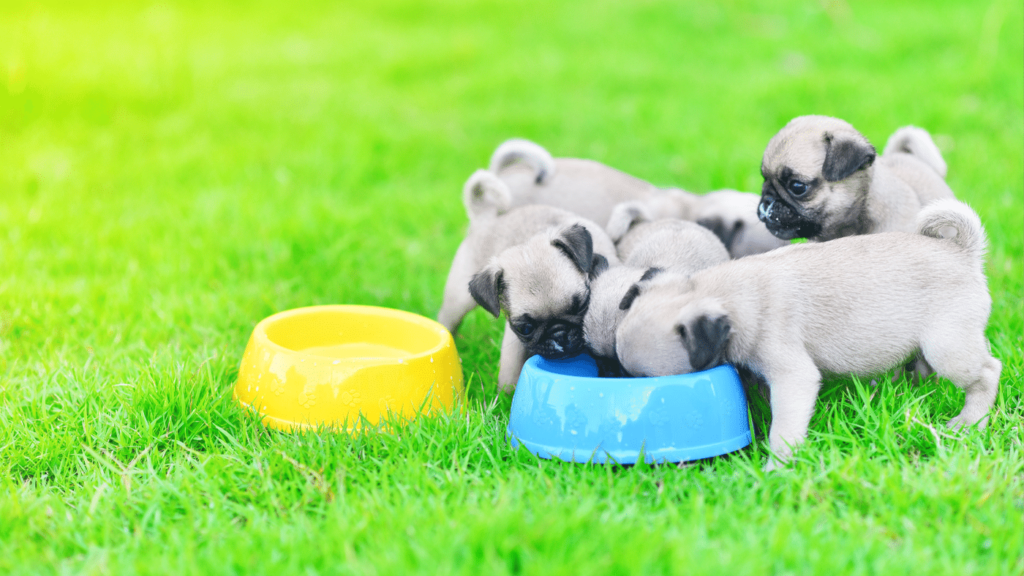
Maintaining a Healthy Diet Throughout Their Life
Transitioning to Adult Food
When to Make the Switch
- Age Milestone: Pugs typically reach adulthood around 12 to 18 months of age. This is the ideal time to transition from puppy food to adult food.
- Consult Your Veterinarian: While the age range is a general guideline, it’s essential to consult your veterinarian to determine the best timing for your specific pug. Your vet can consider your pug’s growth and development rate.
Adult Food Selection
- Balanced Nutrition: Look for adult dog food that offers a balanced blend of proteins, fats, and carbohydrates. Your pug’s nutritional needs will stabilize as they reach adulthood.
- Age and Health Considerations: Consider any specific health concerns that may arise as pugs age, such as joint issues or allergies. There are adult foods formulated to address these needs.
Senior Pug Nutrition
Addressing Aging Pug’s Dietary Needs
- Joint Support: Many senior pugs experience joint problems. Consider senior dog foods that contain glucosamine and chondroitin to support joint health.
- Weight Management: As pugs age, they become less active, and their metabolism slows down. Senior dog food often has reduced calorie content to help manage their weight.
- Digestive Health: Senior pugs may have more sensitive stomachs. Foods with easily digestible ingredients can help prevent gastrointestinal issues.
Managing Health Conditions Through Diet
- Diabetes: Pugs can be prone to diabetes. Specialized diets with controlled carbohydrate levels may be required to manage this condition.
- Allergies and Sensitivities: As pugs age, their allergies or sensitivities may change. Be vigilant in identifying any new dietary concerns and consult your vet for suitable food options.
- Heart Health: Some senior pugs may develop heart issues. Diets low in sodium and high in heart-healthy nutrients like taurine can support cardiac health.
Maintaining a healthy diet throughout your pug’s life is crucial for their long-term well-being. The transition to adult food should be based on your pug’s individual growth rate, and their adult food should meet their specific dietary needs.
As your pug enters their senior years, it’s essential to adapt their diet to address age-related concerns, such as joint health, weight management, and sensitive stomachs.
Regular consultations with your veterinarian will provide valuable insights into your pug’s evolving dietary requirements and ensure they enjoy a healthy and happy life.

Troubleshooting: Common Feeding Issues
Picky Eaters: What to Do When Your Pug is Finicky
- Understanding Picky Behavior: Pugs can be notoriously picky eaters. If your pug turns their nose up at their food, it’s essential to first understand the reason behind their fussiness. It could be a matter of taste, texture, or even environmental factors.
- Variety and Patience: Introducing variety to their diet can help stimulate their interest in food. Be patient and try different recipes or commercial foods to find what they prefer. However, maintain nutritional balance while doing so.
- Scheduled Feeding: Pugs thrive on routine. Establish a consistent feeding schedule, offering food at the same times each day. Remove the bowl if they don’t eat, and offer it again at the next scheduled mealtime.
Weight Gain and Obesity
Identifying the Signs
- Healthy Weight Range: It’s essential to know your pug’s healthy weight range. Weigh your pug regularly and compare their weight to this range. Signs of obesity include a lack of a defined waistline, difficulty feeling their ribs, and a reluctance to exercise.
- Regular Vet Check-ups: Routine veterinary visits are critical for monitoring your pug’s weight and overall health. Your vet can help you identify and address weight issues early.
Strategies for Maintaining a Healthy Weight
- Portion Control: Accurately measure your pug’s food portions and follow recommended guidelines. Avoid overfeeding, as excess calories can lead to obesity.
- Regular Exercise: Pugs love to play, so engage them in regular, age-appropriate exercise. Walks, playtime, and interactive toys can help them maintain a healthy weight.
- Weight-Loss Diets: If your pug is already overweight, consult your veterinarian for a weight-loss plan. Specialized weight-loss diets can provide the nutrition they need while helping them shed excess pounds.
Health Problems and Diet
Diet as a Preventative Measure
- Pug-Specific Health Concerns: Pugs are predisposed to specific health issues, such as hip dysplasia and respiratory problems. A well-balanced diet can help prevent or mitigate some of these issues by maintaining a healthy weight and promoting overall well-being.
- Consult Your Veterinarian: Discuss your pug’s specific health concerns with your veterinarian. They can recommend dietary adjustments that align with your pug’s unique needs.
Supporting a Pug with Health Issues
- Specialized Diets: Depending on your pug’s health issues, your veterinarian may recommend specialized diets. For example, joint supplements or diets designed for senior dogs with heart conditions can be beneficial.
- Medication and Diet: If your pug requires medication, consult your vet about any potential interactions with their diet. Some medications can affect appetite or digestion, which might require dietary adjustments.
It’s not uncommon for pugs to face common feeding issues like picky eating or weight gain. Understanding the underlying causes and implementing strategies to address these problems is vital for your pug’s health.
If your pug has specific health concerns, their diet can play a supportive role in preventing or managing these issues.
Regular consultations with your veterinarian are crucial for identifying and addressing feeding issues and ensuring your pug enjoys a healthy and fulfilling life.

What to Feed a Pug Puppy Conclusion
Summing Up the Most Important Things to Remember
- Nutrition is Key: Your pug puppy’s health and happiness depend on a well-balanced diet. Prioritize their nutrition to set the stage for a long and joyful life together.
- Breed-Specific Considerations: Always keep in mind the unique characteristics of pugs, including their flat faces, weight tendencies, and potential health issues, when choosing their food.
- Variety and Balance: Offering a variety of foods while maintaining a balanced diet is crucial. This keeps mealtime interesting and ensures your pug gets the nutrients they need.
- Consult Your Veterinarian: Your veterinarian is your best source of guidance on your pug’s nutrition. Regular check-ups and open communication about your pug’s dietary needs are essential.
- Adapt and Adjust: As your pug puppy grows and ages, be prepared to adapt and adjust their diet to suit their changing requirements. The right food at the right time can make all the difference.
Wishing You and Your Pug Puppy Good Luck on Their Nutritional Journey
Bringing a pug puppy into your life is a delightful adventure, and providing them with the best possible nutrition is a cornerstone of responsible pet ownership. We wish you and your pug puppy good luck on their nutritional journey, filled with health, happiness, and a whole lot of puppy love. May the years to come be brimming with wagging tails, playful antics, and the purest form of companionship.
Remember, your role as a pug owner is to be their provider, protector, and partner in their well-being. Their nutritional journey is a fundamental aspect of your bond, so embrace it with love, care, and an ever-present willingness to do what’s best for your furry friend.
Additional Reading
What is the Lifespan of a Pug?
